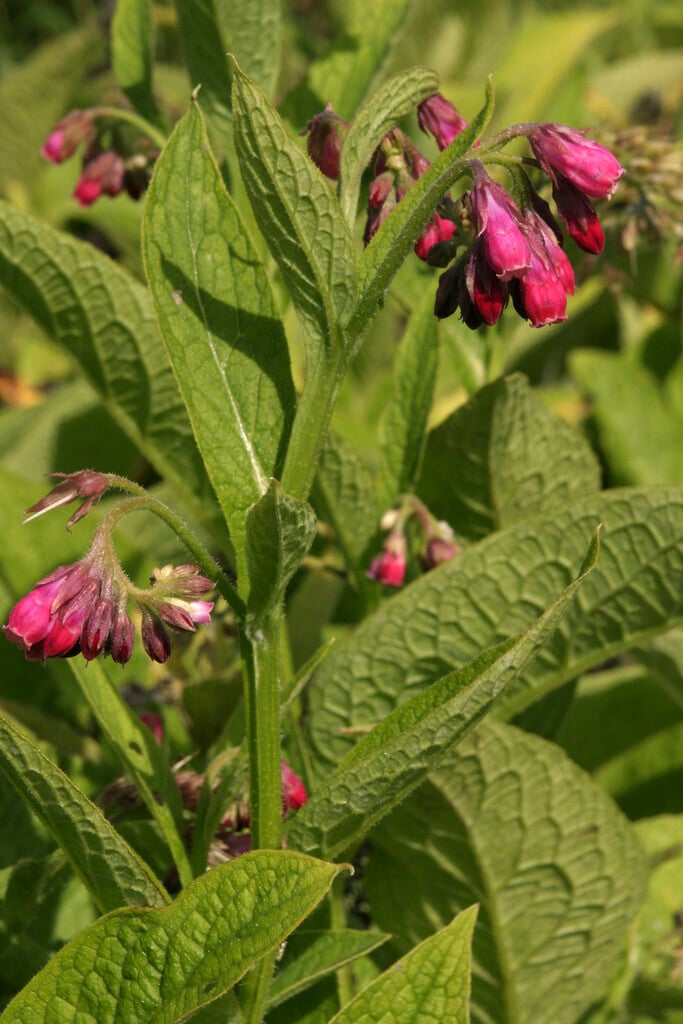Not the plant you're looking for? Search over 300,000 plants
Herbaceous Perennial
Size
Ultimate height
0.1–0.5 metresTime to ultimate height
2–5 yearsUltimate spread
0.1–0.5 metresGrowing conditions
Loam
Clay
Chalk
Moisture
Moist but well–drainedpH
Neutral, Acid, AlkalineColour & scent
| Stem | Flower | Foliage | Fruit | |
| Spring | Green | |||
|---|---|---|---|---|
| Summer | Red | Green | ||
| Autumn | Green | |||
| Winter |
Position
- Full sun
- Partial shade
Aspect
West–facing or East–facing or South–facing
Exposure
Sheltered Hardiness
H6Botanical details
- Family
- Boraginaceae
- Native to GB / Ireland
- No
- Foliage
- Deciduous
- Habit
- Clump forming
- Potentially harmful
- Harmful if eaten repeatedly. Wear gloves and other protective equipment when handling Pets (rabbits, rodents): Harmful if eaten repeatedly - for further information and contact numbers regarding pets, see the HTA guide to potentially harmful plants
- Genus
Symphytum are rhizomatous herbaceous perennials, sometimes invasive, with large leaves and nodding clusters of tubular flowers
- Name status
Accepted
How to grow
Cultivation
Grow in sun or partial shade in moist, moderately fertile soil. Spreading in habit but should be less of a nuisance than some other very vigorous Symphytum species
Propagation
Propagate by division or root cuttings
Suggested planting locations and garden types
- Cottage and informal garden
- Flower borders and beds
- Underplanting of roses and shrubs
Pruning
Generally not required but old or fading foliage can be trimmed
Pests
Generally pest-free
Diseases
Generally disease-free
Get involved
The RHS is the UK’s gardening charity, helping people and plants to grow - nurturing a healthier, happier world, one person and one plant at a time.
